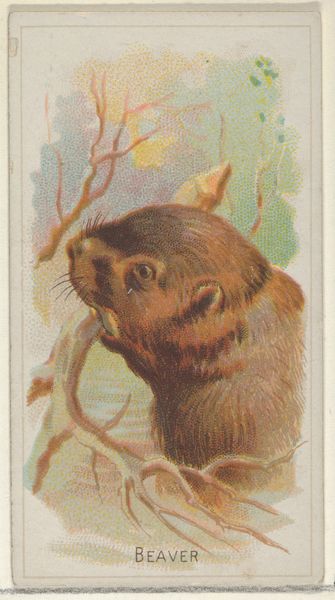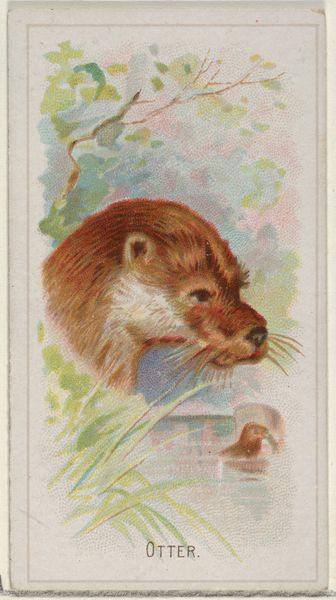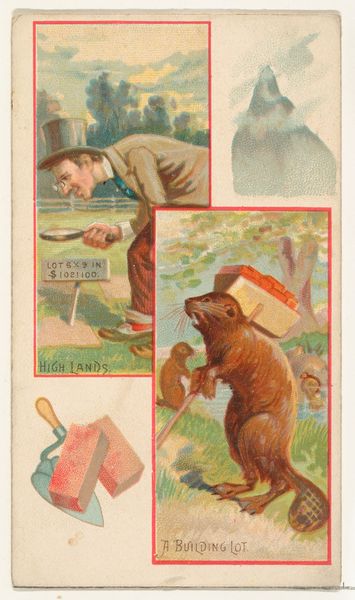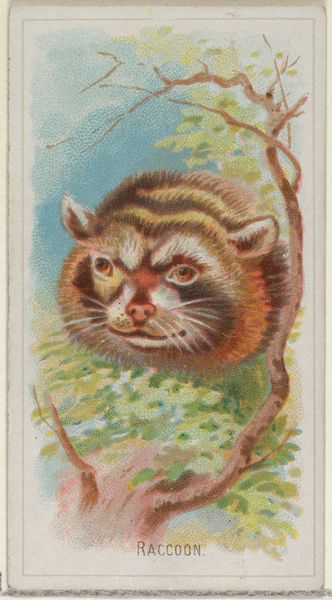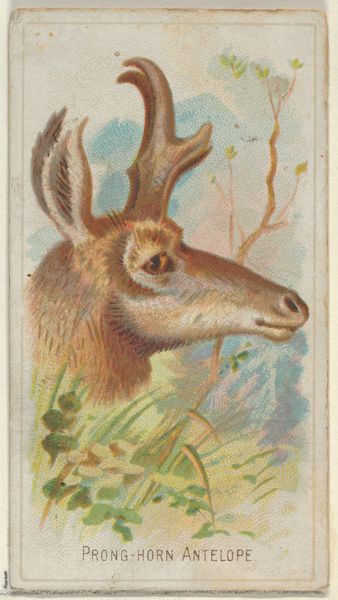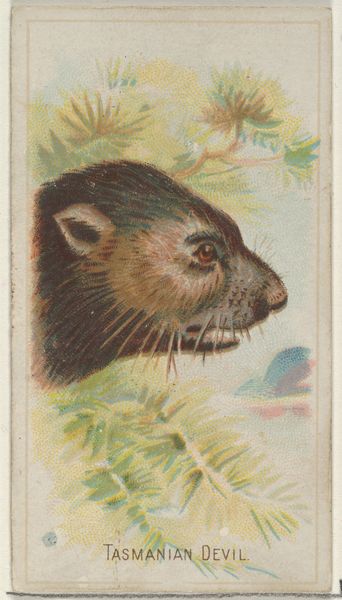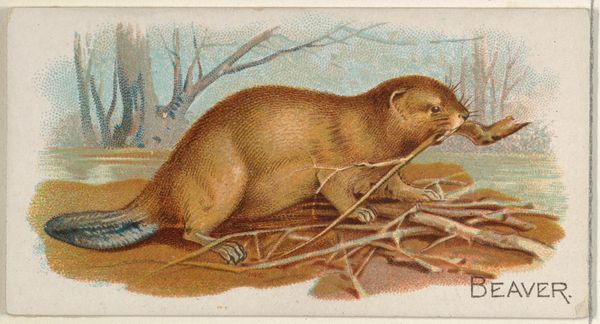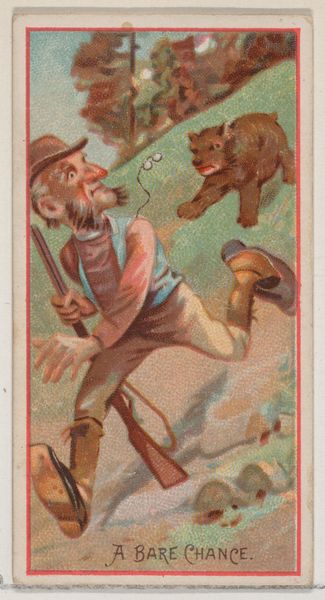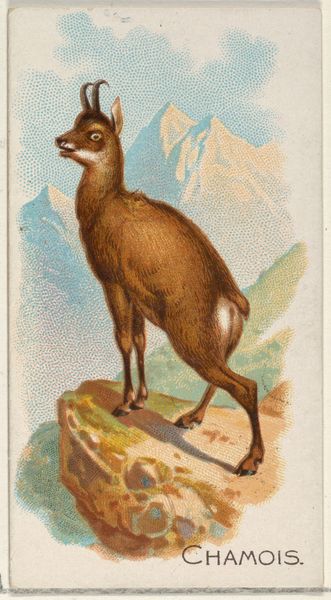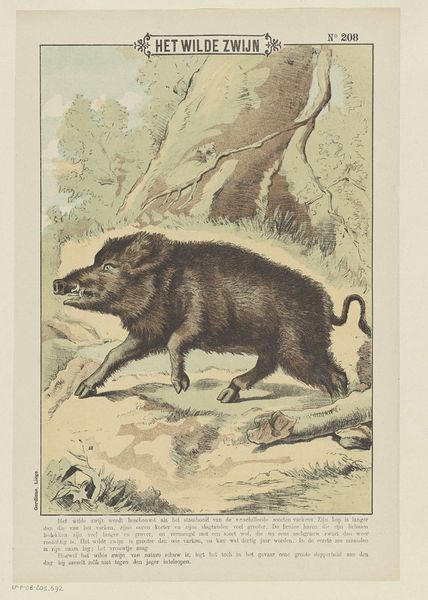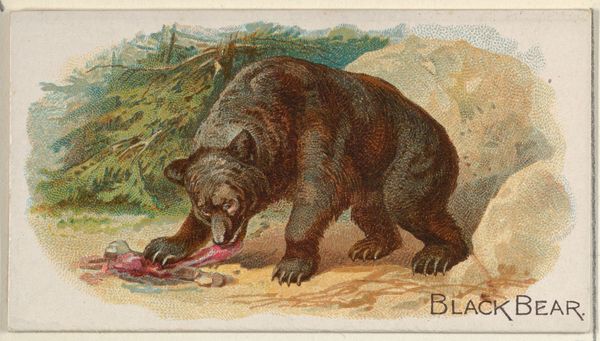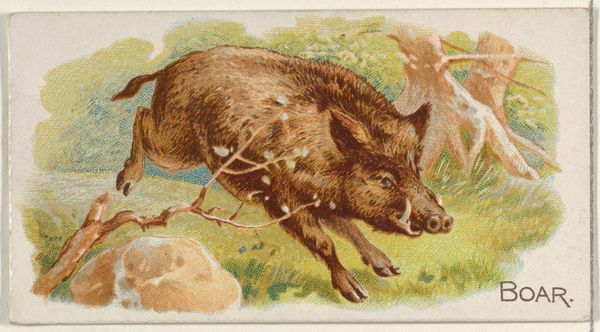
A Building Lot, from the Jokes series (N87) for Duke brand cigarettes 1890
0:00
0:00
drawing, coloured-pencil, print
#
drawing
#
coloured-pencil
#
pictorialism
# print
#
coloured pencil
#
genre-painting
Dimensions: Sheet: 2 3/4 × 1 1/2 in. (7 × 3.8 cm)
Copyright: Public Domain
Editor: So this is "A Building Lot" from the Jokes series, an 1890 coloured-pencil print made for Duke brand cigarettes. It's…whimsical. A beaver hauling bricks. What do you see here? Curator: I see a fascinating glimpse into late 19th-century consumer culture. Forget the anthropomorphism for a moment, and consider the materiality of this object. It's a print, mass-produced for a tobacco company. Editor: Okay… so, not art for art's sake. Curator: Precisely. The “art” here is subservient to capital. Look at the colored pencil technique—it's not about artistic expression but about efficient reproduction. These weren't crafted as fine art but as collectible inserts designed to drive consumption. The "joke" becomes the product, designed to be bought and collected alongside tobacco. The materials, from paper to ink, and the printmaking processes, speak to that intent. Editor: But why beavers? Is there a social comment, like about workers, or is it a silly distraction? Curator: That's a great question, and not easily answered. I'd suggest we see them less as commenting on worker exploitation, although the analogy could be argued, and more as tools to increase consumption of Duke cigarettes by depicting cute, engaging creatures involved in everyday activities. This print offered, literally, a playful "joke" about work for potential customers, packaged as an attractive and collectible trading card. The materials *are* the message, and labor becomes the joke. Does that shift your perception at all? Editor: It does. I hadn't thought about how the very cheapness and ubiquity was actually the whole point of the work. This image circulated far and wide, becoming part of daily life through cigarettes! It also becomes clearer how "genre painting," like the theme classification suggests, applied to these trading cards differ sharply in purpose compared to actual fine art of that time. Thanks! Curator: Indeed! And by understanding its creation and consumption, we begin to grasp how deeply entwined art and commerce can be.
Comments
No comments
Be the first to comment and join the conversation on the ultimate creative platform.
